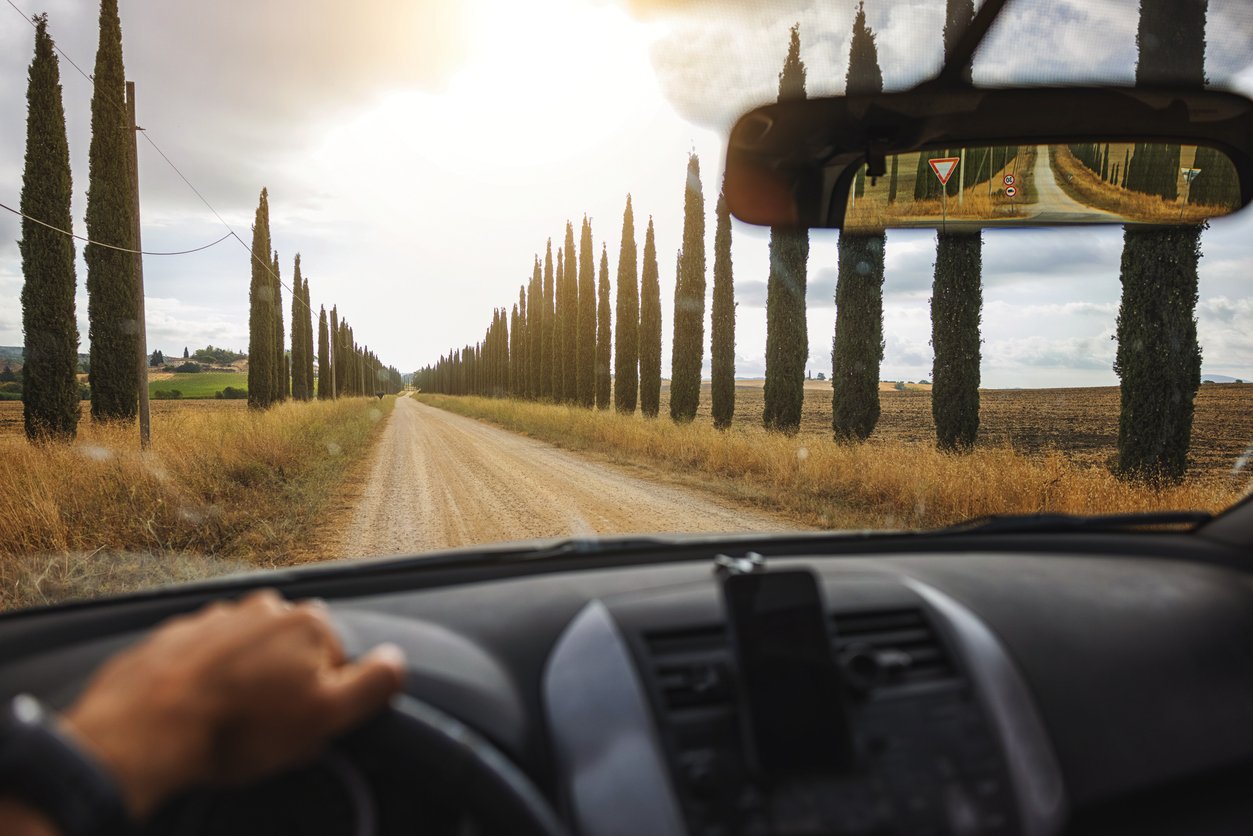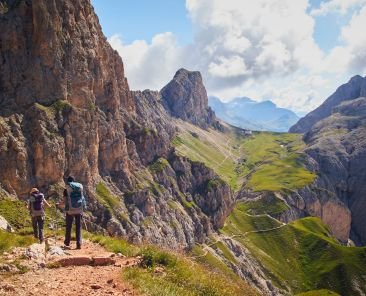Before going to Italy, I have to admit I was a bit anxious about the prospect of driving there. With all the talk of “crazy Italian drivers,” it felt like I was walking into a stereotype.
However, after spending some time behind the wheel in the Veneto, I found that, while Italian drivers can be assertive, the vast majority follow the rules. And I found that the roads were very well maintained throughout the region.
Getting Ready: Age, Documents, and Child Safety
To legally drive in Italy, you must be 18 years old, regardless of your home country’s rules. You’ll need to carry your driver’s licence, insurance, and vehicle registration documents at all times. Police may ask to see these documents during routine checks, so keep them handy.
If you’re travelling with children, remember that child seats are mandatory for children under 12 years old or shorter than 150 cm.
Finally, like in much of Europe, Italians drive on the right-hand side of the road, so be prepared to adjust if you’re coming from a country where driving is on the left.
Road Types and Directions
Italian roads are organised differently than in the UK or US, where signs might be marked “northbound” or “southbound.” In Italy, roads are labelled by destination. For instance, on a motorway near Venice, you might see signs for “Venezia – Vicenza”, indicating the two main endpoints of the route. Simply choose your direction based on where you’re heading.
Italian road signs are also colour-coded to help you navigate:
- Green: Motorways (autostrade), usually toll roads.
- Blue: Extra-urban roads (strade extraurbane).
- White: Local roads.
- Brown: Scenic routes and places of cultural interest.
Speed Limits and Fines
Italian speed limits vary depending on the road type:
| Type of Road | Code | Standard Speed Limit |
| Autostrada (Motorway) | A | 130 km/h (110 km/h in rain or bad weather) |
| Main Non-Urban Road (Strada Statale) | SS | 110 km/h (90 km/h in rain or bad weather) |
| Secondary Non-Urban Road (Strada Provinciale) | SP | 90 km/h (80 km/h in rain or bad weather) |
| Urban Road (Inhabited Area) | – | 50 km/h |
It’s important to stick to the limits, as speed cameras are widespread, and fines can be issued if you exceed the limits by even a small margin. Fines will follow you home and can increase if left unpaid.
Navigating Toll Roads
Italy has an extensive network of toll roads (autostrade), which are typically marked with green signs. Toll charges depend on the distance travelled, and prices can range from a few euros for short trips to around €20 for longer routes such as Venice to Florence.
When you approach a toll road, you’ll enter through a lane marked carte (cards) or biglietto (ticket). Take a ticket from the machine, and the barrier will lift. Keep the ticket until you reach your exit, where you’ll insert it into the machine and pay. Use the lane marked carte to pay by card or cash, and the barrier will lift again to let you through. If you encounter any issues, there’s a help button at the toll booths you can press for assistance.
Telepass: A Time-Saver
For frequent travellers, the Telepass system is a useful alternative. This electronic toll collection service allows you to pass through specially marked lanes without stopping. Your account is automatically charged, making it a faster and smoother process, but it does require a subscription.
ZTL Zones and Fines
One thing to be especially cautious about is ZTL zones (Zona Traffico Limitato), which are often found in city centres and are reserved for authorised vehicles only. You’ll know you’re entering a ZTL zone by the signs indicating restricted areas, usually showing a red circle with a white background, accompanied by times or conditions when entry is limited. If you enter without a permit, you’ll receive a fine that will follow you home. These fines are guaranteed, and the amount increases if not paid promptly.
Emergency Numbers
In case of an emergency, here are the key numbers to keep in mind:
- 112: General emergency number
- 113: Police.
- 118: Ambulance.
A Few Final Tips
Driving in Italy is generally safe and efficient, but a little preparation goes a long way. Stick to the speed limits, carry your documents, and avoid ZTL zones to avoid fines. Along the way, you’ll find Autogrill service stations—perfect for a break, offering coffee, snacks, and sandwiches. An Italian friend taught me that if you drink your espresso standing at the bar, it typically costs less—around €1.50.
Buon viaggio!
Good job! Please give your positive feedback
How could we improve this post? Please Help us.









